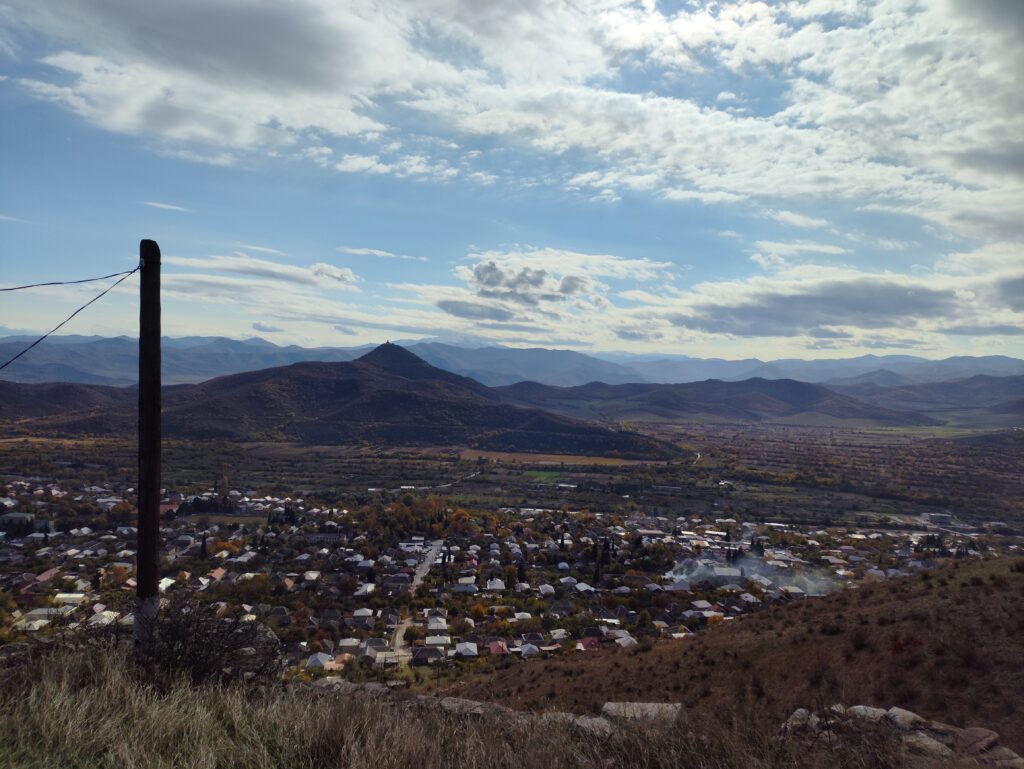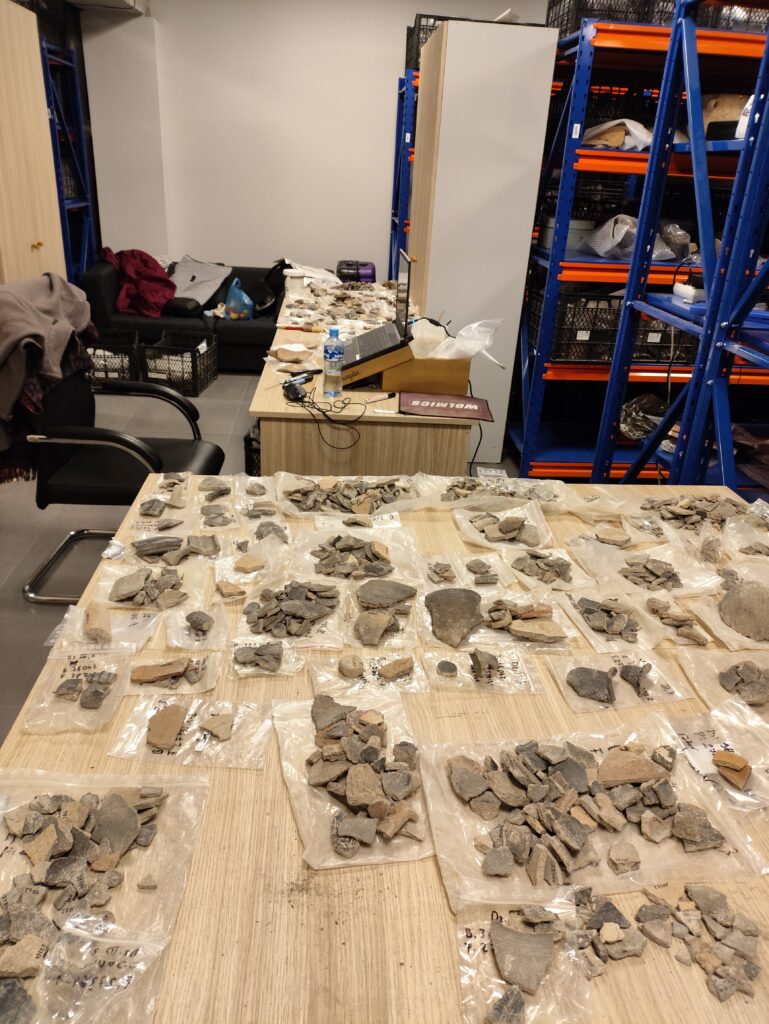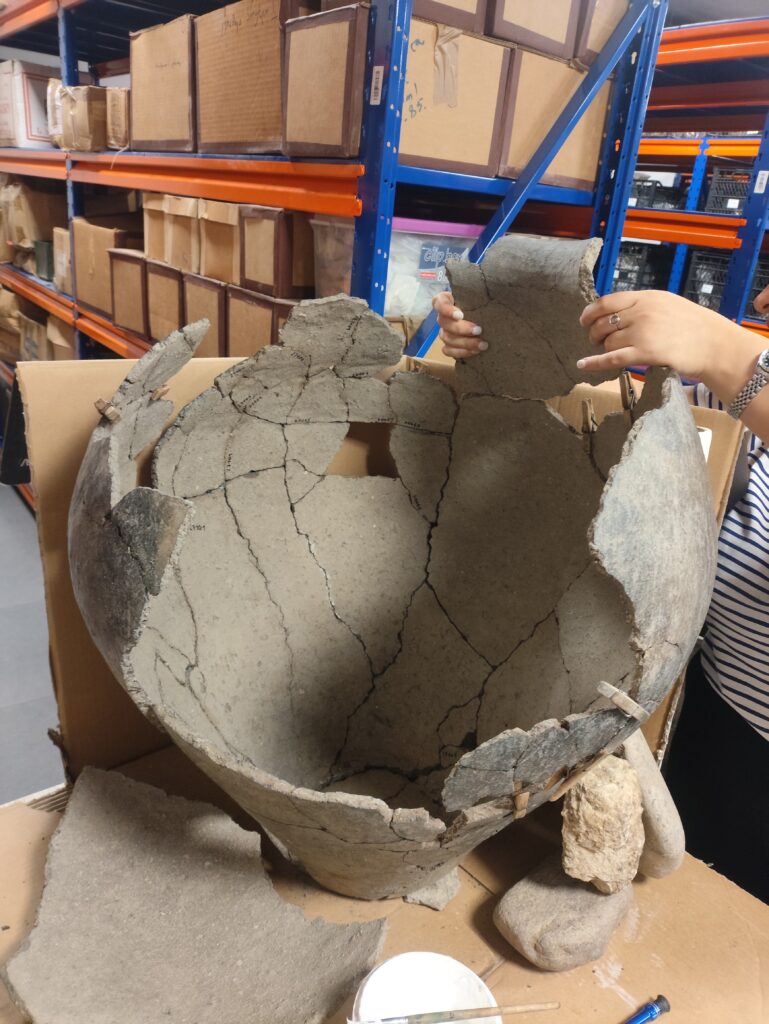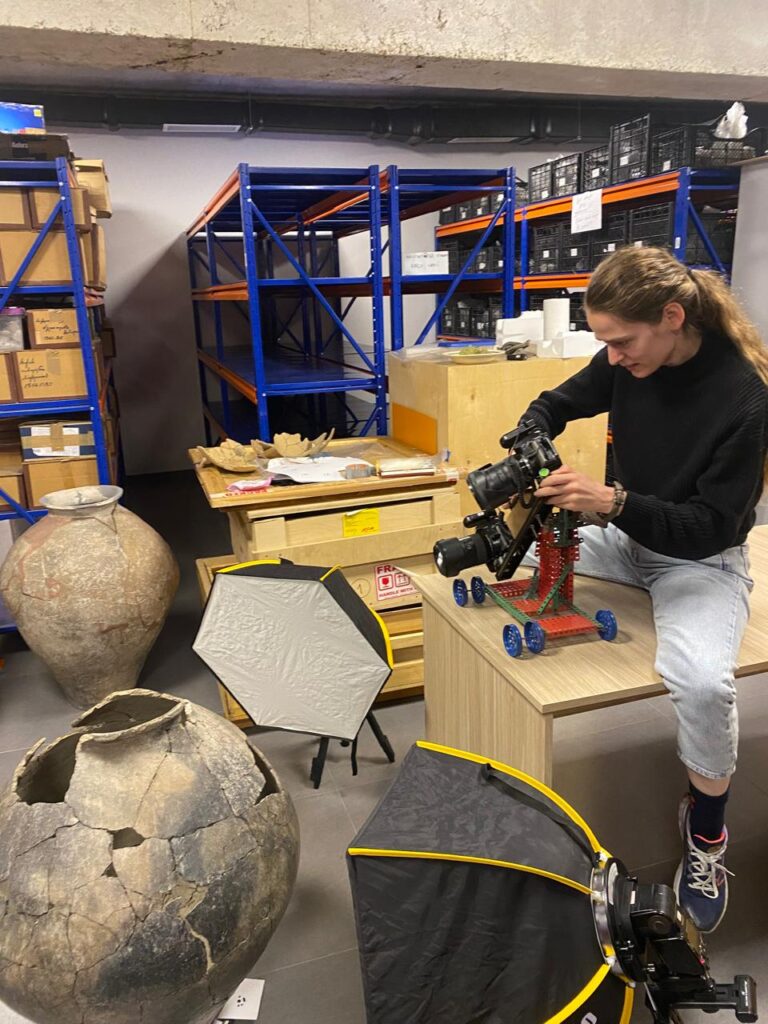Pottery as a medium of practice in the community
ReForm Scholar
I am currently working on the analysis of ceramic assemblages from the Iron Age settlement of Balitchi-Dzedzvebi in Georgia. The focus of my study is to connect the physical, taxonomic, and morphological aspects of pottery with the chronological development of the site. This approach will not only help understanding the changes happening through periods but also provide insights into the broader social dynamics of the period.

When analyzing the material, I also aim to understand the organizational and economic structure of the site. Although ceramic material is often viewed as the result of using a resource – clay – I believe, ceramics can also be considered a resource in their own right. In this context, the material being studied can serve as a primary source of knowledge about the site, offering nearly limitless insights. These can range from the origin of the clay to the trade relations of the communities, and the economic and organizational division of the locality, among others.
Pottery used in specific communities can also reflect the practices and traditions of those communities. By studying ceramics, I can gain a deeper understanding of the cultural and social practices in play. The different ways clay was shaped to create vessels can reveal a great deal about the community’s craftsmanship and its technological advances. The entire Chaîne opératoire, or the sequence of operations involved in pottery production, can help explain the practices and skills that the community possessed or utilized.
Although the Caucasus has been explored more intensively over the last two decades, much remains unknown about the life and activities of Iron Age populations. Previous research is was not published or often the researched material lack clear connections to specific horizons or structures, complicating the task of creating accurate stratigraphic periodization for these sites. Fortunately, this situation is beginning to change, with more structured and detailed research now being published and made accessible to the wider public.


In the case of Dzedzvebi, recent interdisciplinary investigations have primarily focused on the Bronze Age settlement, with less emphasis placed on the Iron Age material. The ceramics from the Iron Age were documented hastily in the early stages of research, with only a limited amount of material being photographed or thoroughly described. Despite this, the Dzedzvebi site is exceptionally rich in information about Iron Age cultures in the Caucasus.
Given pottery’s durability, it stands as one of the richest sources of information for understanding ancient communities. By identifying typological characteristics, such as the diameter of rims and the shape of different vessel types, I aim to connect fragments with specific vessel categories (e.g., pots, jugs, pithoi, or bowls). This classification process will provide critical insights into the cultural and economic aspects of the Iron Age population at Dzedzvebi.


Updates
Poster contribution to the Interweaving Resources conference: Iron Age Settlement of Balitchi – Dzedzvebi: Ceramic Material from Pits – Storage or Disposal? (PDF download)
